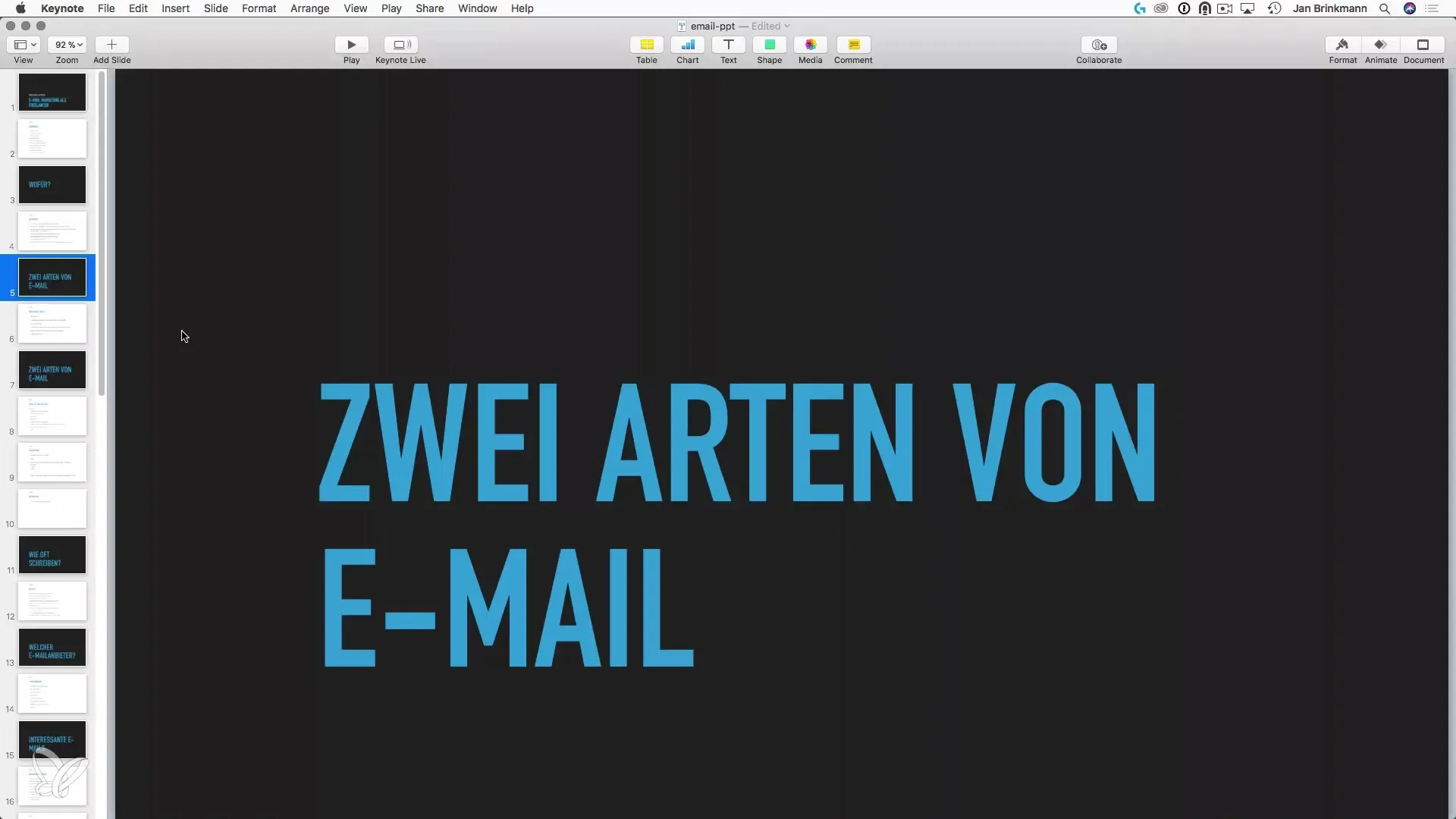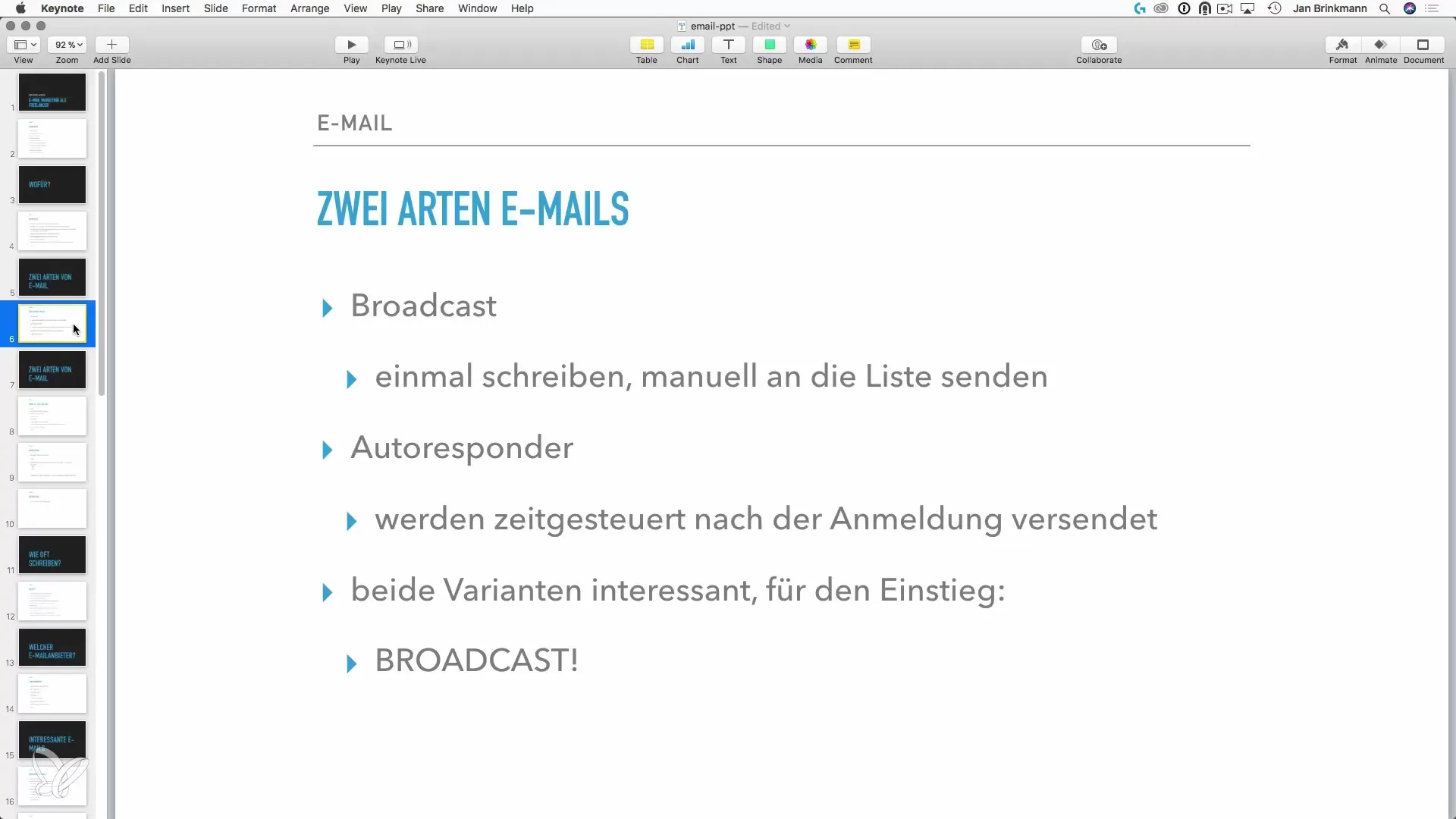E-mails are a crucial part of digital communication and one of the most effective methods of customer acquisition. When you start reaching out to your target audience, you will quickly realize that there are two fundamental types of e-mails you can use. In this guide, you will learn more about these two types of e-mails and how you can effectively use them for your marketing. The first type we will look at is broadcast e-mails, followed by autoresponders.
Key takeaways
- There are two main types of e-mails: broadcast e-mails and autoresponder e-mails.
- Broadcast e-mails are manually created messages sent to many recipients at once.
- Autoresponder e-mails are sent on a timed basis and allow for automated interaction with your target audience.
- To learn good e-mail communication, you should first start with broadcast e-mails before turning to the more complex autoresponder systems.
Step-by-step guide
1. Understanding Broadcast E-Mails
Broadcast e-mails are the foundation of an effective marketing strategy. They are comparable to a television broadcaster sending a signal into the world. When you send a broadcast e-mail, you compose a message that is then distributed to a list of recipients. This form of e-mail communication is excellent for conveying information or offers to a wide audience without making individual adjustments.

Make sure your broadcast e-mails are well-written and attractively designed. You should create them manually in an e-mail editor and then send them through your trusted e-mail provider. The focus here is on the quality of the content and the attention of the recipients.
2. The Role of the Autoresponder
In contrast to broadcast e-mails, autoresponder e-mails are automated messages sent on a timed basis. They allow you to send a series of e-mails that respond to specific events or time intervals. For example, you can set up a new e-mail to be processed and sent every two days. This opens up countless possibilities for interaction with your customers.

With an autoresponder, you can create a topic-based sequence of e-mails based on your recipients' interests. If someone, for example, clicks on a specific article about e-commerce, you can directly target that recipient with further e-mails about conversion optimization.
3. Creative Approaches with Autoresponders
The possibilities offered by an autoresponder are virtually limitless. You can provide recipients with relevant content based on their behavior, which leads to a higher likelihood of them responding to your e-mails. Additionally, you can address various topics, such as backup and maintenance of an e-commerce system.
For example, if you find that a particular topic generates more interest, you can build on that and offer specific content or even recommend products and services that might interest your recipients.
4. The Learning Process
Before diving into the complex world of autoresponders, it is advisable to first learn the art of writing high-quality broadcast e-mails. Good e-mails are crucial for how your brand is perceived. If you only send automated content, you risk your messages being ignored if they are not engaging or relevant.
By manually composing e-mails, you learn what resonates with your audience, which topics generate interest, and which contents achieve high click rates. This knowledge will help you later to design your automated e-mail campaigns more effectively.
5. Conclusion and Outlook
It is important to begin with broadcast e-mails to develop a sense for the needs and wants of your customers. The experiences you gather will help you build an effective autoresponder system tailored to your target audience.
Once you have mastered the basics, you can leverage the power of automation to optimize your customer acquisition and achieve your marketing goals.
Summary - Customer Acquisition through Facebook and Google AdWords: The Two Types of E-Mails in Marketing
E-mails are an indispensable tool in customer acquisition. The distinction between broadcast e-mails and autoresponder e-mails is fundamental for building a successful strategy. Start with manually creating broadcast e-mails to develop a deep understanding of your target audience before delving into the more complex world of autoresponders.
Frequently Asked Questions
How do I create a broadcast e-mail?To create a broadcast e-mail, log into your e-mail provider, create a new message, and format it appealingly for your recipients.
When should I use autoresponders?Autoresponders are useful when you want to establish automated interactions with your target audience, such as through timed sends.
How often should I send e-mails?This depends on your target audience, but a frequency of one to two e-mails per week can often be effective without overwhelming recipients.
What are the benefits of autoresponders?Autoresponders enable automated and personalized addressing of your target audience, which can increase engagement rates and save time.
Should I prioritize manual or automated e-mails?You should start with manual e-mails to learn the ins and outs of e-mail communication before transitioning to automated solutions.


